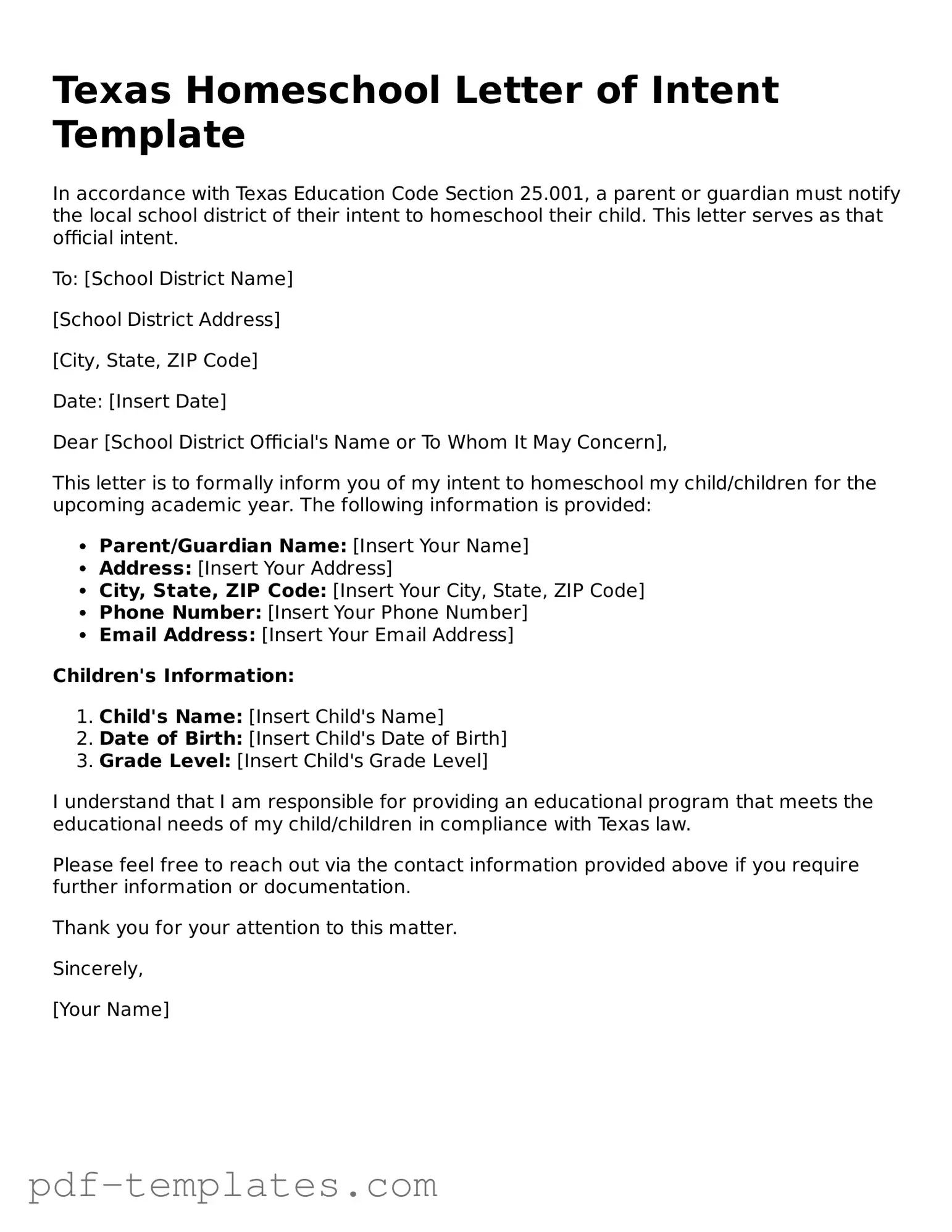The Texas Homeschool Letter of Intent form is similar to the notice of intent required for private school enrollment in many states. Just as parents must submit a letter of intent to homeschool their children, they often need to notify their local education authority when choosing to enroll their child in a private institution. This document serves to inform the school district of the parents' decision and outlines the educational path they have chosen for their child. Both documents emphasize parental choice in education and require a clear expression of intent to pursue a specific educational route.
Another document comparable to the Texas Homeschool Letter of Intent is the Individualized Education Program (IEP) used for children with special needs. An IEP outlines specific educational goals and the services a child will receive. While the IEP is tailored to address the unique needs of a child with disabilities, both documents require parental involvement and commitment to a child's education. Parents must actively participate in developing the IEP, similar to how they must take initiative in creating a homeschooling plan that meets their child's needs.
For those interested in renting a space, the essential Room Rental Agreement form provides a clear framework for the rental process, detailing the obligations of both landlord and tenant to prevent any misunderstandings throughout the rental period.
The notification of withdrawal form, which parents submit when removing their child from public school, also shares similarities with the Texas Homeschool Letter of Intent. This form is crucial for officially documenting a child's transition from a public school setting to homeschooling. Just as the letter of intent serves to inform the school district of a homeschooling decision, the withdrawal form notifies the school that the child will no longer be enrolled. Both documents signify a shift in educational responsibility from the school to the parents.
Furthermore, the educational plan required for charter schools can be likened to the Texas Homeschool Letter of Intent. Charter schools often require parents to submit a detailed educational plan that outlines their child’s learning objectives and methods of instruction. This requirement parallels the intent letter, which also reflects the educational philosophy and goals parents have for their homeschooled children. Both documents highlight the importance of planning and accountability in the educational process.
Lastly, the enrollment application for online schooling programs bears resemblance to the Texas Homeschool Letter of Intent. When parents choose to enroll their children in an online school, they typically must complete an application that details their educational intentions. This application often requires information about the student’s learning environment and educational goals, similar to the information provided in the homeschool letter of intent. Both documents serve to establish a framework for the child's education, ensuring that parents are actively engaged in their child’s learning journey.
